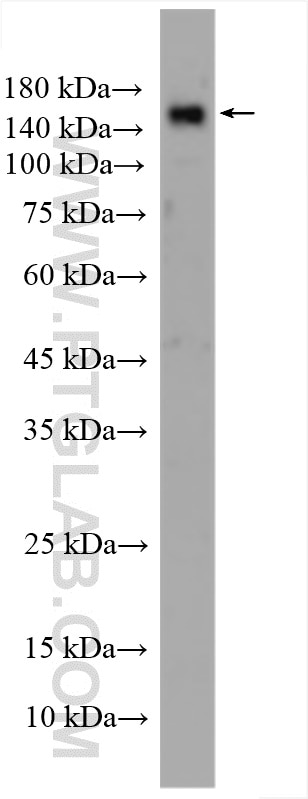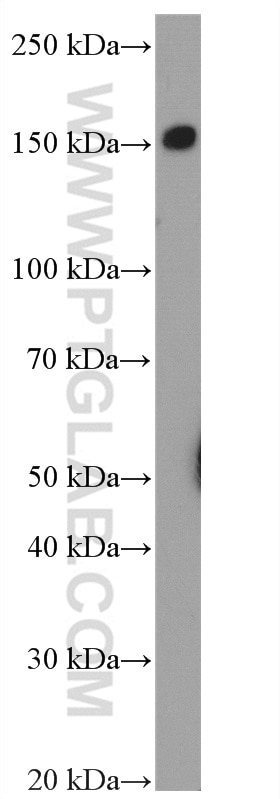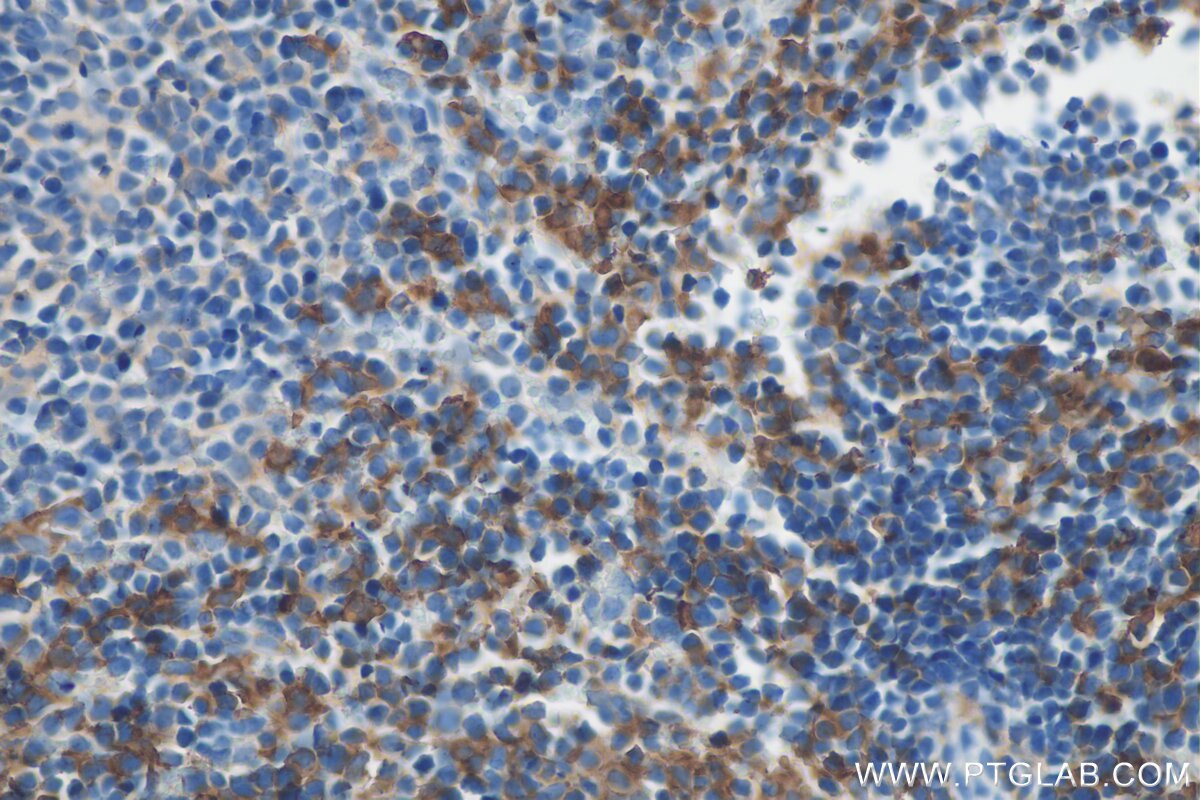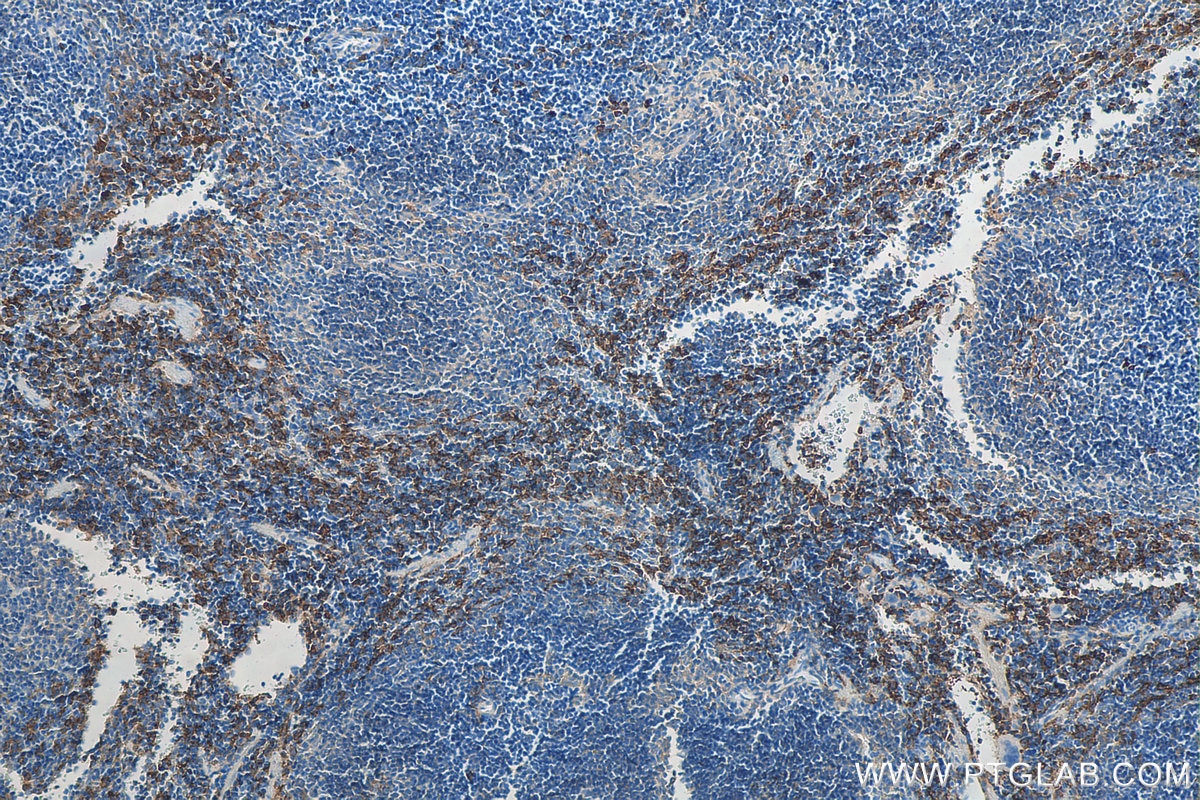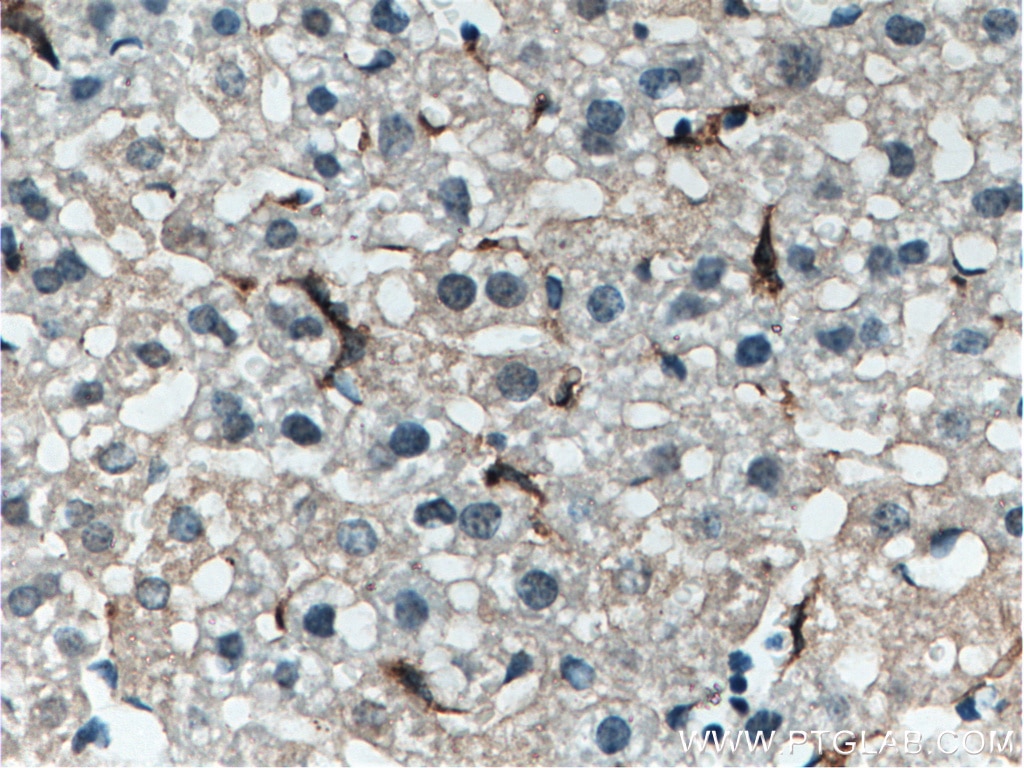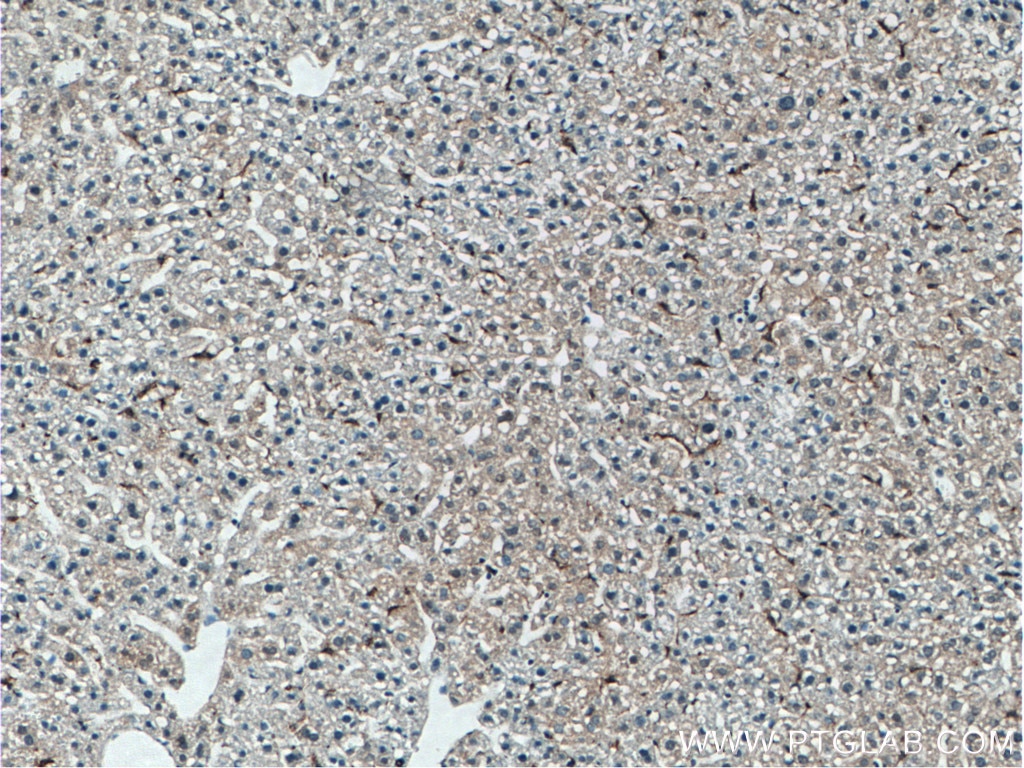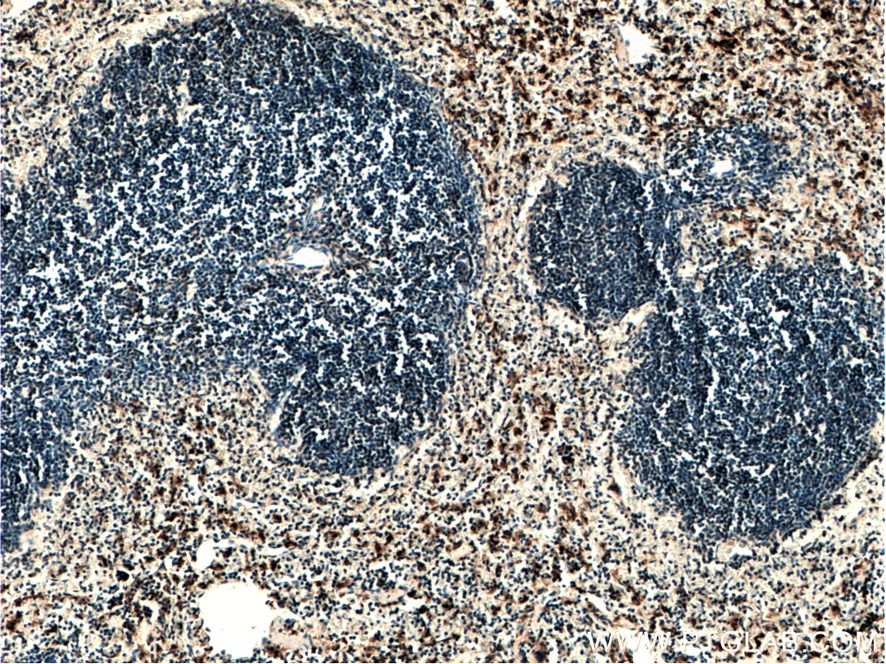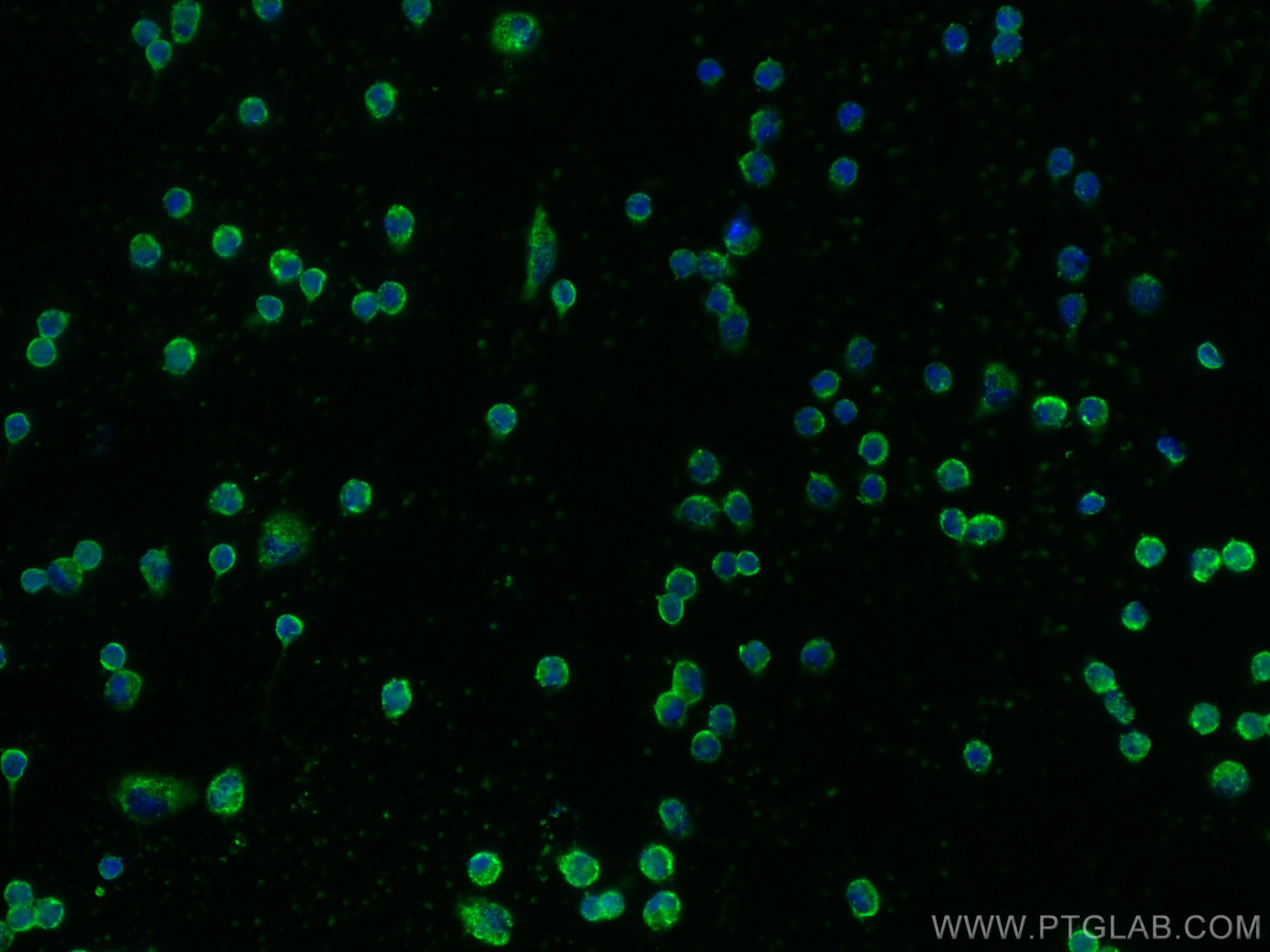EMR1 Polyklonaler Antikörper
EMR1 Polyklonal Antikörper für WB, IHC, IF/ICC, ELISA
Wirt / Isotyp
Kaninchen / IgG
Getestete Reaktivität
human, Maus und mehr (2)
Anwendung
WB, IHC, IF/ICC, ELISA
Konjugation
Unkonjugiert
Kat-Nr. : 27044-1-AP
Synonyme
Geprüfte Anwendungen
| Erfolgreiche Detektion in WB | unboiled RAW 264.7 cells, HL-60-Zellen |
| Erfolgreiche Detektion in IHC | Mausmilzgewebe, Mauslebergewebe Hinweis: Antigendemaskierung mit TE-Puffer pH 9,0 empfohlen. (*) Wahlweise kann die Antigendemaskierung auch mit Citratpuffer pH 6,0 erfolgen. |
| Erfolgreiche Detektion in IF/ICC | peritoneale Makrophagen der Maus |
Empfohlene Verdünnung
| Anwendung | Verdünnung |
|---|---|
| Western Blot (WB) | WB : 1:500-1:2000 |
| Immunhistochemie (IHC) | IHC : 1:400-1:1600 |
| Immunfluoreszenz (IF)/ICC | IF/ICC : 1:50-1:500 |
| It is recommended that this reagent should be titrated in each testing system to obtain optimal results. | |
| Sample-dependent, check data in validation data gallery | |
Veröffentlichte Anwendungen
| WB | See 6 publications below |
| IHC | See 20 publications below |
| IF | See 12 publications below |
Produktinformation
27044-1-AP bindet in WB, IHC, IF/ICC, ELISA EMR1 und zeigt Reaktivität mit human, Maus
| Getestete Reaktivität | human, Maus |
| In Publikationen genannte Reaktivität | human, Hausschwein, Maus, Ratte |
| Wirt / Isotyp | Kaninchen / IgG |
| Klonalität | Polyklonal |
| Typ | Antikörper |
| Immunogen | EMR1 fusion protein Ag25883 |
| Vollständiger Name | egf-like module containing, mucin-like, hormone receptor-like 1 |
| Berechnetes Molekulargewicht | 886 aa, 97 kDa |
| Beobachtetes Molekulargewicht | 160 kDa |
| GenBank-Zugangsnummer | BC059395 |
| Gene symbol | EMR1 |
| Gene ID (NCBI) | 2015 |
| Konjugation | Unkonjugiert |
| Form | Liquid |
| Reinigungsmethode | Antigen-Affinitätsreinigung |
| Lagerungspuffer | PBS with 0.02% sodium azide and 50% glycerol |
| Lagerungsbedingungen | Bei -20°C lagern. Nach dem Versand ein Jahr lang stabil Aliquotieren ist bei -20oC Lagerung nicht notwendig. 20ul Größen enthalten 0,1% BSA. |
Hintergrundinformationen
EMR1 (EGF-like module containing mucin-like hormone receptor 1), also known as Adhesion G protein-coupled receptor E1 (ADGRE1), is a surface receptor with seven transmembrane segments that belong to the EGF-7-transmembrane family of G protein-coupled receptors (PMID: 14647991, 7601460). EMR1 expression is restricted to eosinophilic granulocytes, where expression is overlapping with the eotaxin receptor CCR3 and the immunoglobulin-like lectin Siglec-8. Absence on other leukocytes, including basophils, implies that EMR1 is a highly specific marker for eosinophils in humans and may be used as a novel therapeutic target for eosinophilic disorders (PMID: 17823986, 24530099). F4/80, the murine homolog of EMR1, is a marker of murine macrophage. The apparent molecular weight of F4/80 is 160 kDa, which is larger than the calculated molecular weight due to post-translational modifications (PMID: 7308288; 8647179).
Protokolle
| PRODUKTSPEZIFISCHE PROTOKOLLE | |
|---|---|
| WB protocol for EMR1 antibody 27044-1-AP | Protokoll herunterladen |
| IHC protocol for EMR1 antibody 27044-1-AP | Protokoll herunterladenl |
| IF protocol for EMR1 antibody 27044-1-AP | Protokoll herunterladen |
| STANDARD-PROTOKOLLE | |
|---|---|
| Klicken Sie hier, um unsere Standardprotokolle anzuzeigen |
Publikationen
| Species | Application | Title |
|---|---|---|
Cell Res A phosphatidic acid-binding lncRNA SNHG9 facilitates LATS1 liquid-liquid phase separation to promote oncogenic YAP signaling. | ||
Acta Pharm Sin B A non-human primate derived anti-P-selectin glycoprotein ligand-1 antibody curtails acute pancreatitis by alleviating the inflammatory responses | ||
Autophagy Buddleoside alleviates nonalcoholic steatohepatitis by targeting the AMPK-TFEB signaling pathway | ||
Theranostics SPTBN1 inhibits inflammatory responses and hepatocarcinogenesis via the stabilization of SOCS1 and downregulation of p65 in hepatocellular carcinoma. | ||
Cancer Lett MicroRNA-15b in extracellular vesicles from arsenite-treated macrophages promotes the progression of hepatocellular carcinomas by blocking the LATS1-mediated Hippo pathway. | ||
